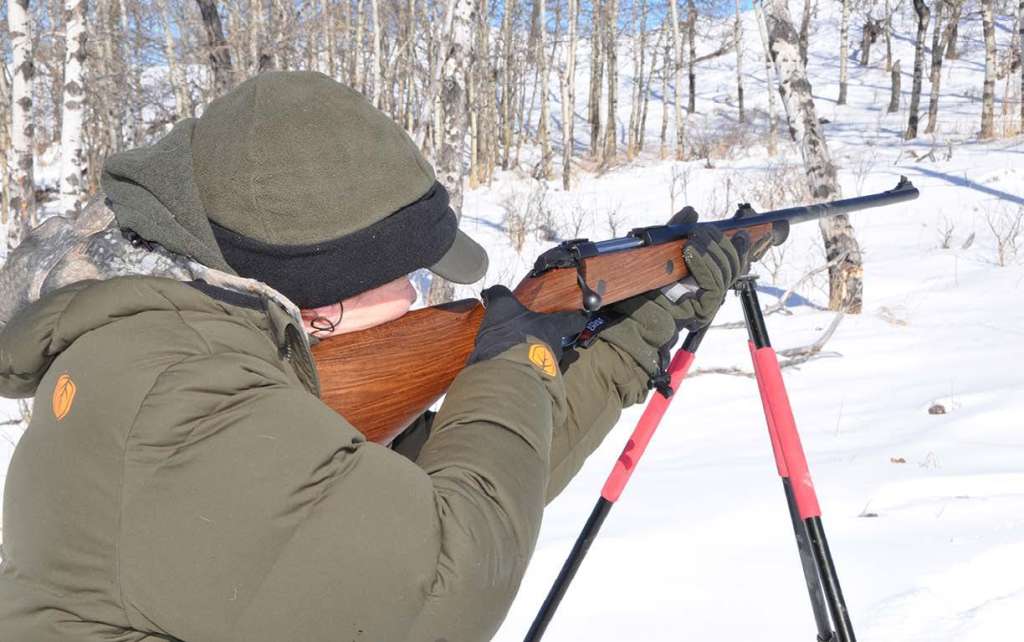Proper rifle fit is often overlooked when purchasing a new firearm, but it’s crucial for maximum field accuracy. Not all rifles fit the same, nor do all shooters require the same fit.
Many hunters’ first experience shooting is with a borrowed rifle. These guns typically don’t fit very well, resulting in bad habits developed early on. New shooters may learn to adapt, but few ever shoot a poorly fitting rifle to its full potential. The trick is to initially shoot a rifle that fits perfectly, resulting in more shooting enjoyment and fewer bad habits. Even if you’ve been the victim of a poorly fitting hand-me-down, moving to a proper-fitting rifle will instantly help you shoot better and more comfortably. The size of your rifle does matter.
There are many factors that determine the proper fit of a rifle, including length of pull (LOP), overall body size, neck length, cheek size, the rifle’s drop at comb and heel and even the clothing the shooter wears. But first up is LOP.

LENGTH OF PULL
The LOP is the distance between the middle of the trigger and the butt end of the rifle stock. A proper LOP is necessary to ensure the shooter can shoulder the rifle comfortably, and it also puts the head and eye into the correct position to use the sights or scope. Having a rifle with a correct LOP can help reduce the amount of felt recoil.
Determining your LOP is one of the most important ways to establish whether the rifle will fit you. With this dimension correct, you will have quick sight acquisition, better control, better accuracy, and you will feel more comfortable. You know you have found the right rifle when you shoulder the rifle and your sight picture is immediately on your target, your finger can easily reach the trigger and you don’t have to strain your neck to rest on the cheek piece.
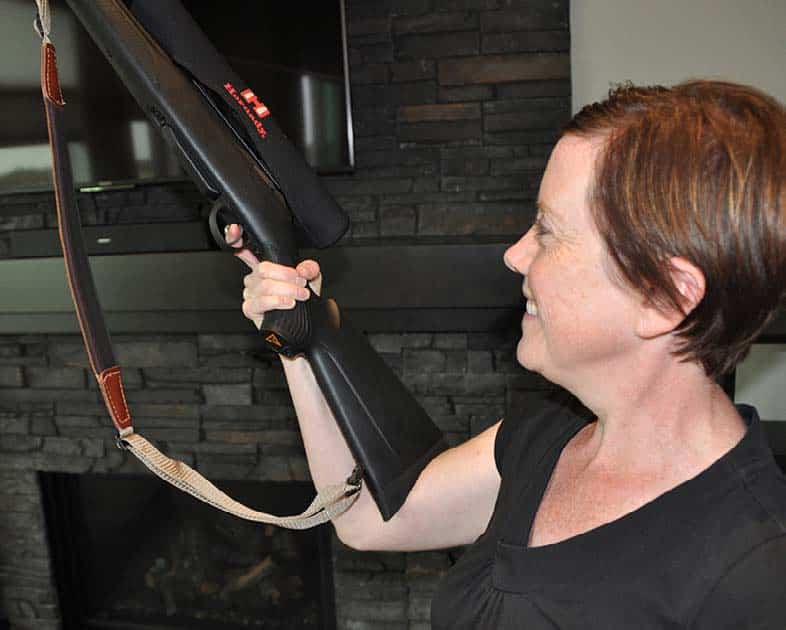
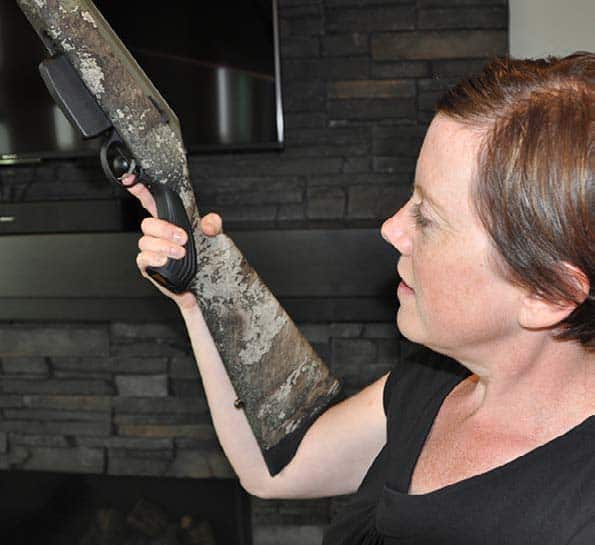
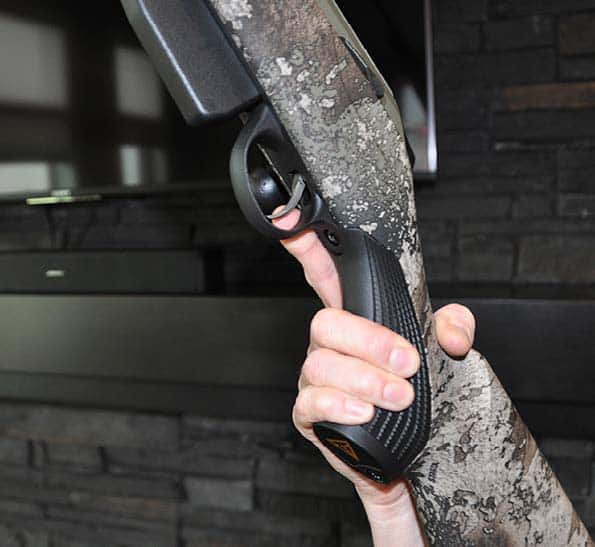
MEASURING LOP
To measure the LOP, first, ensure the magazine and chamber are empty. Next, use a tape measure to find the distance between the center of the trigger and the center of the butt plate or recoil pad. Write this measurement down. Most factory rifles have a LOP between 13 and 13.75 inches.
Here’s how to test the rifle fit:
- Grasp the rifle around the grip with the hand you shoot with and extend your arm out.
- Place your index finger on the trigger face, then bend your arm at the elbow, at 90 Make sure that the butt plate/recoil pad is nestled into the bend of your elbow. If there is more than 1 inch of space between the butt plate/recoil pad and the bend in your elbow, the LOP is too short. If your finger does not reach the trigger, then the LOP is too long. The rifle should sit comfortably in the bend of your arm and your trigger finger should rest comfortably on the trigger.
- Now shoulder the rifle in the firing Check the distance from the middle knuckle of the thumb of your firing hand to your nose. This measurement should be 1.5 inches from your nose. The LOP is too long if the distance is greater, and too short if the distance is less than this.
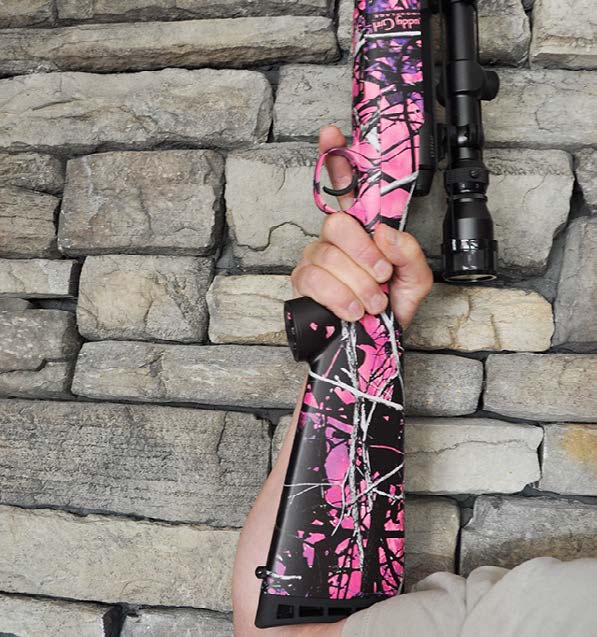
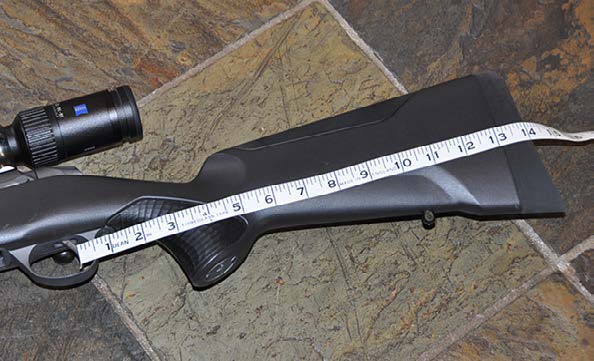
ADJUSTING LOP
Depending on the rifle there may be several options for adjusting the stock length. If the LOP is too long, for example, and it has a thick recoil pad, it’s a simple matter of going to a thinner pad. If that’s not an option, depending on the stock design, trimming it may be possible. But if not, your only other option is replacing the stock with a proper-fitting one. Typically, composite stocks don’t lend themselves to trimming, nor do stocks with raised cheek pieces.
Fortunately, there are numerous manufacturers of aftermarket stocks offering various lengths of pull. Some are easily changed with basic tools, while others require the services of a gunsmith.
If the LOP is too short, you can usually swap the recoil pad for one that is thicker or add spacers between the stock and the butt plate/recoil pad. There are many options for recoil pads and spacers available. Some of the better-known manufacturers are Limbsaver and Pachmayr. With a few basic tools, this is a fairly easy modification.
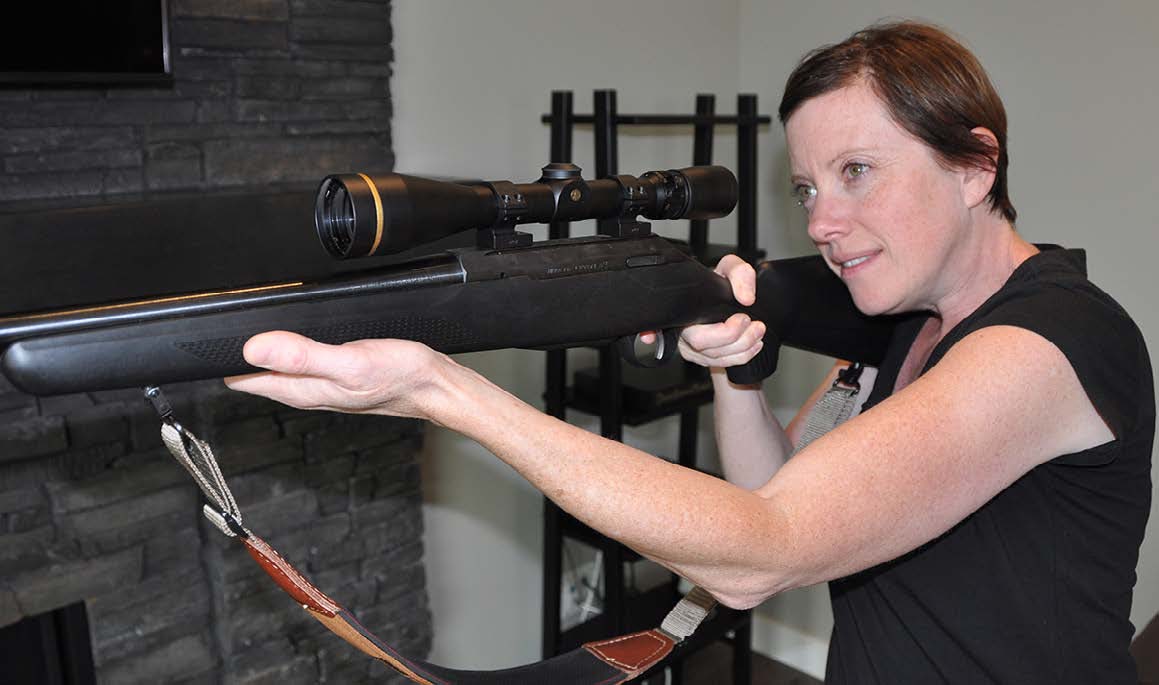
COMB HEIGHT
Another important adjustment is the height and angle of the comb. The comb is the top part of the rifle’s stock where you rest your cheek. The drop at the comb is the measurement between the line of sight and the comb of the stock. Many rifle manufacturers are now offering adjustable cheek pieces on their rifles to allow shooters to change comb height, sometimes in the field. After- market add-on cheek pieces are also available. Having the option of easily adjusting comb height is a real bonus on a rifle that gets fired from many different positions.
For example, I like a low comb height when shooting prone, but I prefer a higher comb when shooting from a standing position. Having a stock that allows me to quickly adjust this height is a real bonus.
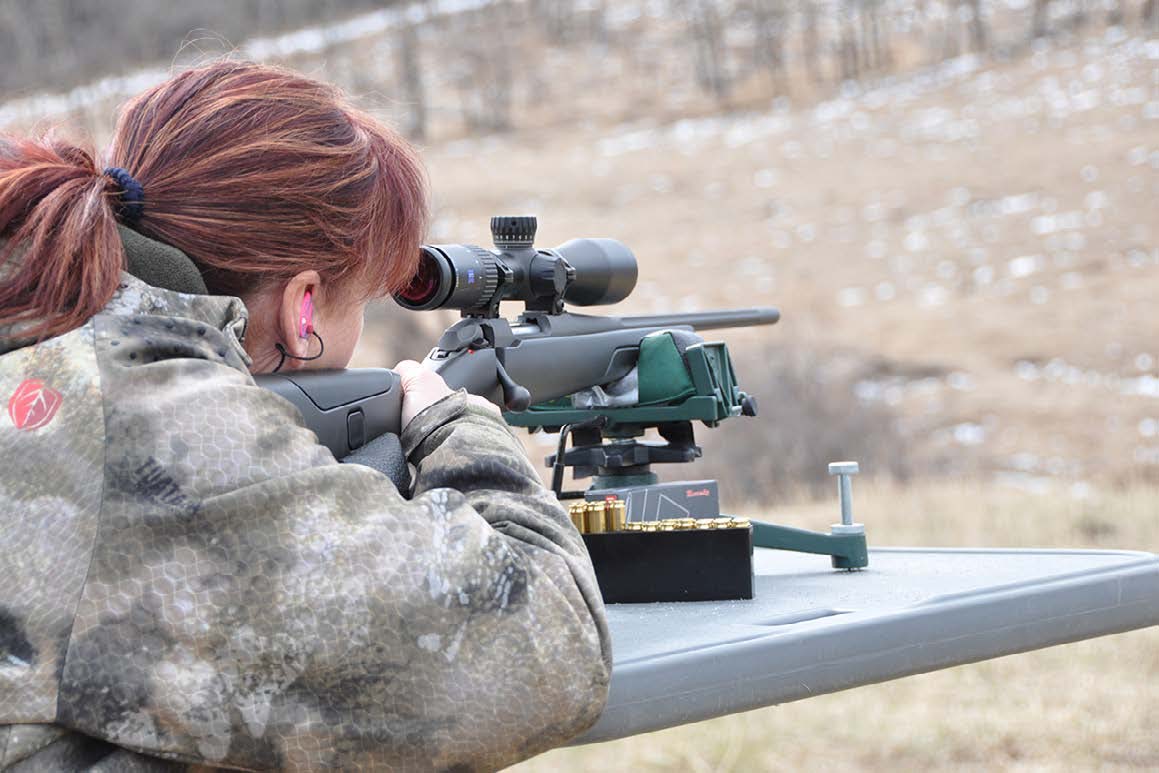
To see what comb heights suit you best, take a rifle with a proper LOP and a scope mounted in the lowest possible rings, then get in the position from which you most commonly shoot. Now, with your eyes closed, rest your head on the cheek piecet as if you are about to shoot.
Hold that position, open your eyes and look through your scope. Is your eye centered in relation to the scope’s view? If you are looking at the bottom of your scope, you need a higher comb. If you’re looking at the top of the scope, a lower comb is necessary.
On rifles with an adjustable comb, it’s a simple matter of moving it up or down and repeating the process until, with a relaxed head and neck, your eye is centered in relation to the scope. On non-adjustable stocks where the comb is too low, an aftermarket cheek piece may solve your problems. On stocks where the comb is too high, going to higher scope rings is an option.
Proper comb height is especially critical on shotguns where rapid alignment is required for fast target acquisition, but even on rifles, this aspect affects comfort and accuracy.
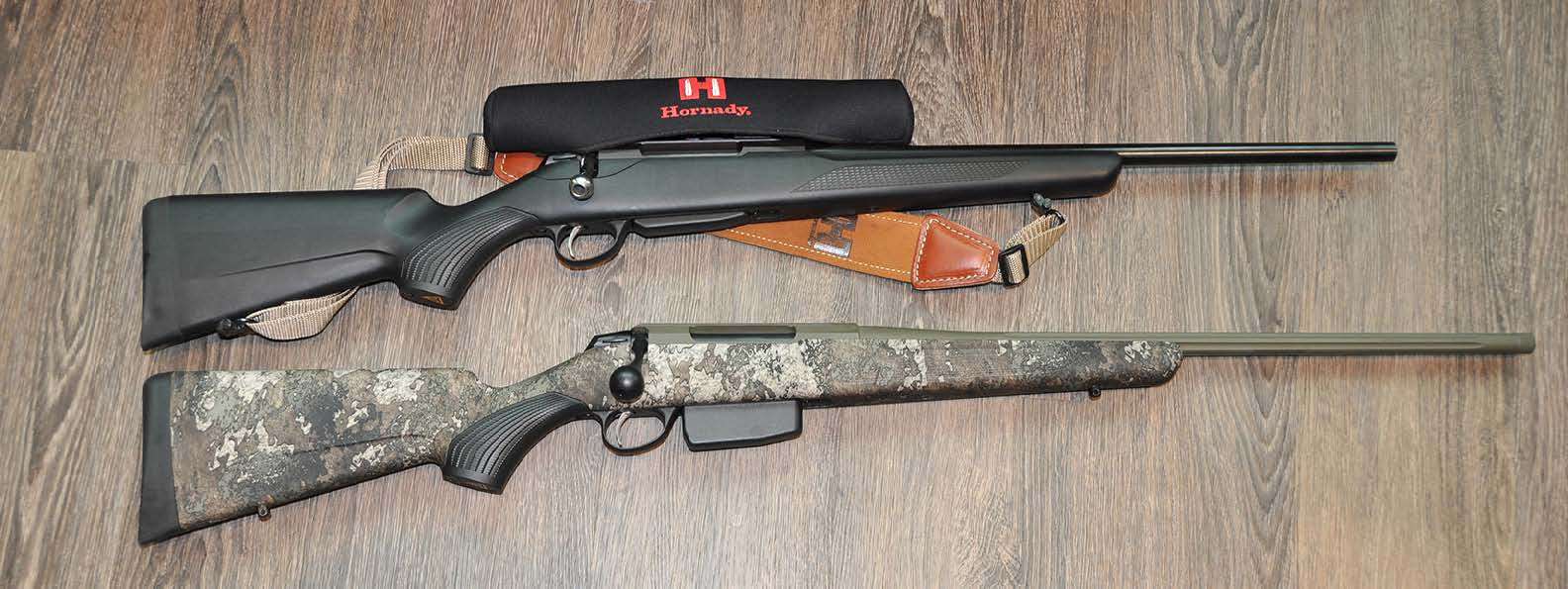
EYE RELIEF
Once you’re happy with LOP and comb height, you need to ensure that your eye relief is correct. Eye relief is simply the distance your eye is from the rear of the scope. It’s evaluated in much the same way as comb height.
- Get into a comfortable firing position, placing your head on the cheek piece with eyes.
- Once comfortable, open your eyes and take note of what the scope’s image looks like. When eye relief is set correctly, you should see a perfect circle with no black edges. If you don’t, move the scope, not your head, forward and backward until you have a clear sight picture with edge-to-edge clarity.
- Make sure to keep your head in a relaxed, natural firing Some scopes offer more noncritical eye relief than others, and I’d suggest setting the scope as far forward as possible while still maintaining that perfect sight picture.
I like scopes that offer four-plus inches of eye relief. This helps prevent getting hit by the scope during recoil, especially when shooting from awkward positions.
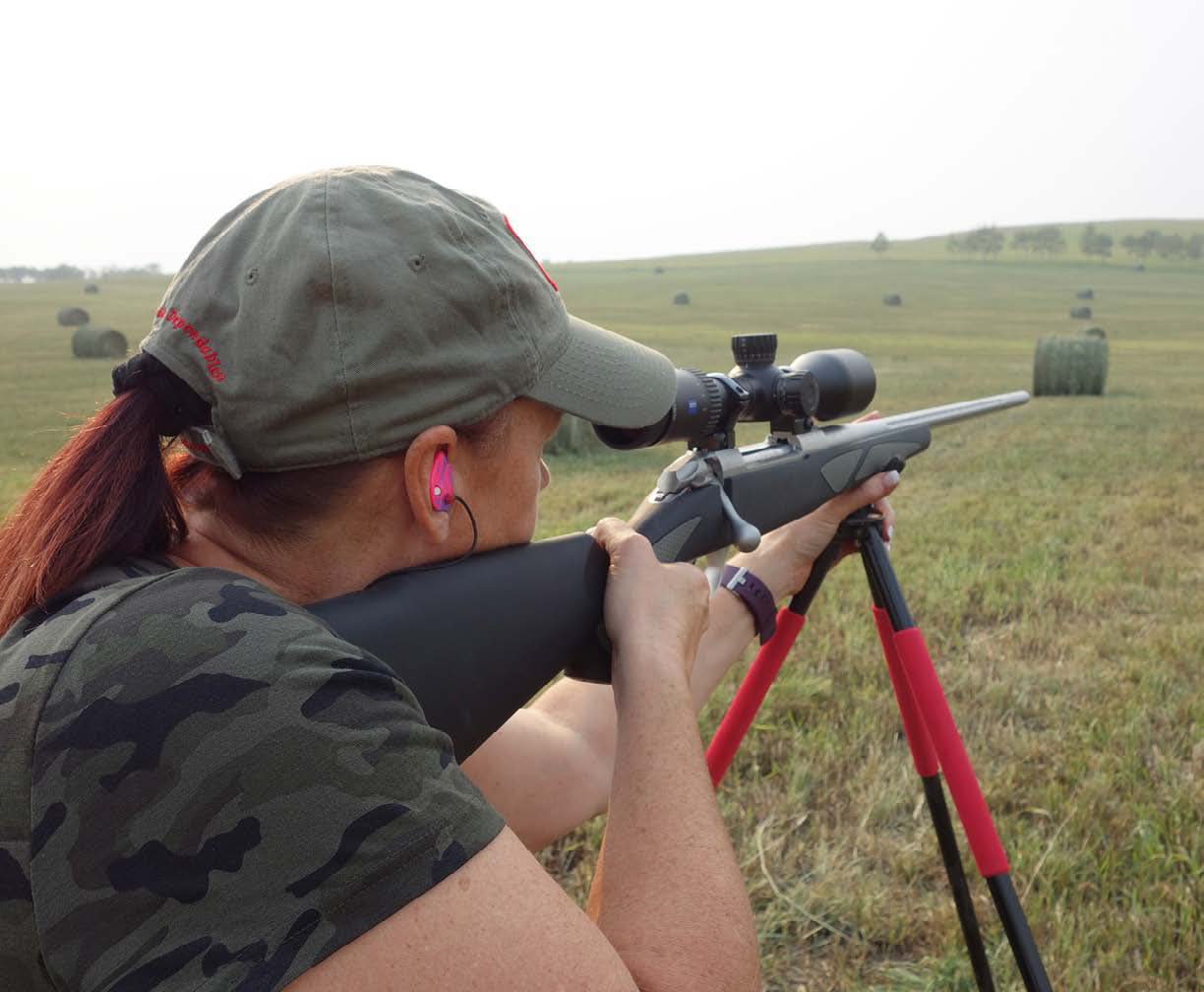
ADJUSTABLE RIFLES
In recent years, several manufacturers have started offering consumer-adjustable stocks on their rifles.
Plenty of rifles now come with a LOP that can be adjusted with factory-supplied spacers. These include rifles like the Tikka T3x Compact. But the real change in the past couple of years has been rifles having multiple points of adjustment. These rifles enable you to change the stock to fit not only your LOP, but comb height as well. The Savage AccuFit System, Sako’s S20, Benelli’s LUPO and Tikka T3x Compact are a few examples.
The Savage Accufit system allows the stock to be shortened to 12.5 inches or expanded to beyond 14.5 inches. They come with four LOP adaptors and five comb height adaptors.
Sako’s S20 is touted as the first true hybrid rifle. The quick-adjustable check piece is easy to adjust with only one hand and one click of a button. The adjustable LOP can be modified with spacers (5 mm per piece). The S20 comes standard with two spacers, but more are available as an accessory. For more information, check out Sako Rifles.
The Benelli LUPO has a Combtech cheek pad, which mitigates felt facial recoil, stock spacers that adjusts the LOP from 13.8 to 14.75 inches. It also offers an optional feature of a progressive comfort large pad which allows the LOP to be adjusted from 14.2 inches to 15.2 inches with standard stock spacers. It also offers an optional raise and extra-high cheek pad to provide a custom fit. There are over 30 stock configurations available to ensure this rifle fits every shooter. For more information, go to: LUPO Bolt-Action Rifles | Benelli Shotguns and Rifles (benelliusa.com).
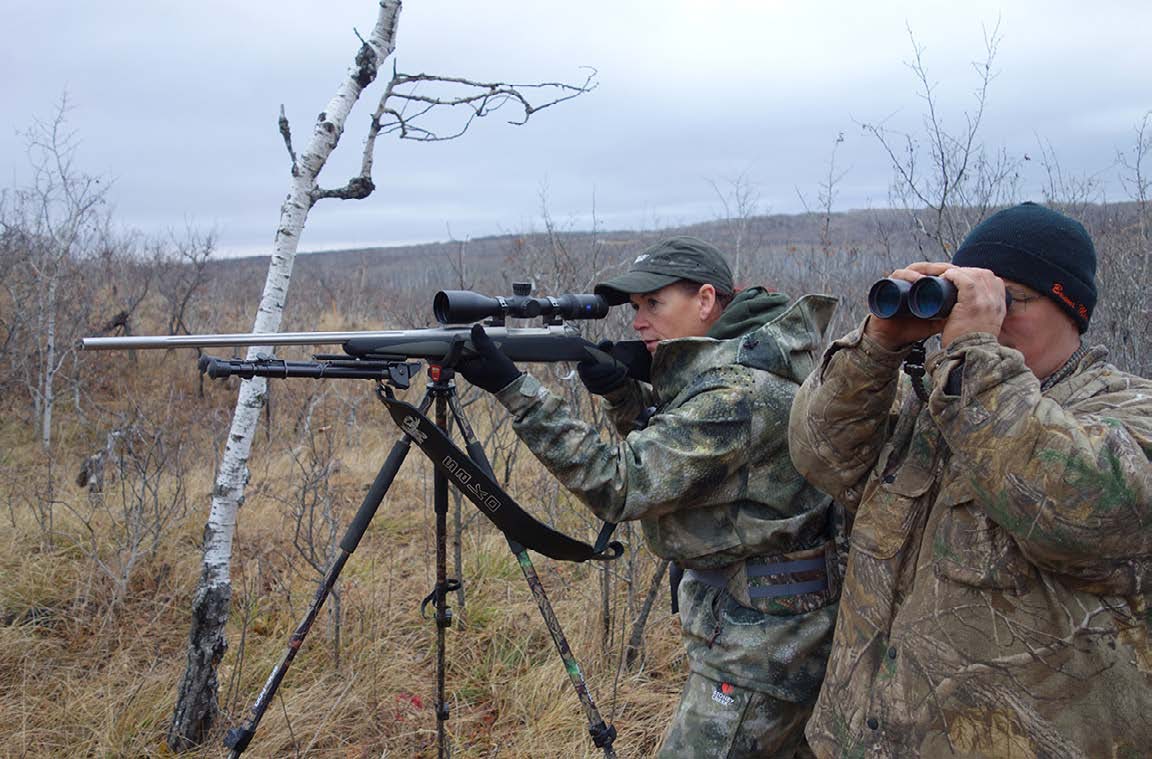
WOMEN AND YOUTH
Women offer some unique challenges when attempting to fit a rifle. Typically, women’s cheekbones are higher, their necks are longer, their arms are shorter, and their frames are smaller.
This makes finding a rifle that fits a real challenge, often requiring numerous trips to the gun shop. Few hand-me-down rifles from fathers or spouses fit women well, creating a potential for disaster. This is especially the case for some new shooters if they end up shooting rifles that are too big and heavy for them.
Most men believe that women require low-recoil chamberings, and for new shooters, that’s a great way to start. But, with a properly fitting rifle, most women find recoil quite tolerable, even from heavier magnums. The key to mitigating recoil is proper fit. Women afraid of recoil have probably never shot a rifle that fits them properly.
The same advice for women applies to young shooters. Youths require rifles that fit their smaller stature. However, kids grow rapidly, so selecting a rifle that’s adjustable is important, which allows the rifle to grow with them. The Tikka T3x Compact is a great choice for a youth or women’s rifle. The rifle comes with a 12.5- inch LOP, creating ideal ergonomics for small-framed shooters. It also includes several spacers to increase LOP as the shooter grows. For more information, check out Tikka Rifles.
It’s great to see rifle manufacturers offering an increasing number of these adjustable rifles. Gone are the days where one size needs to fit all, and it’s a welcome change.
Properly fitted stocks used to be the sole domain of custom rifles, but now, even rifles for the budget minded are offering adjustability. Always remember that rifle fit is the foundation of accuracy and enjoyment of shooting. Also, please ensure that your rifle is always proved S.A.F.E. before doing any of the exercises above.
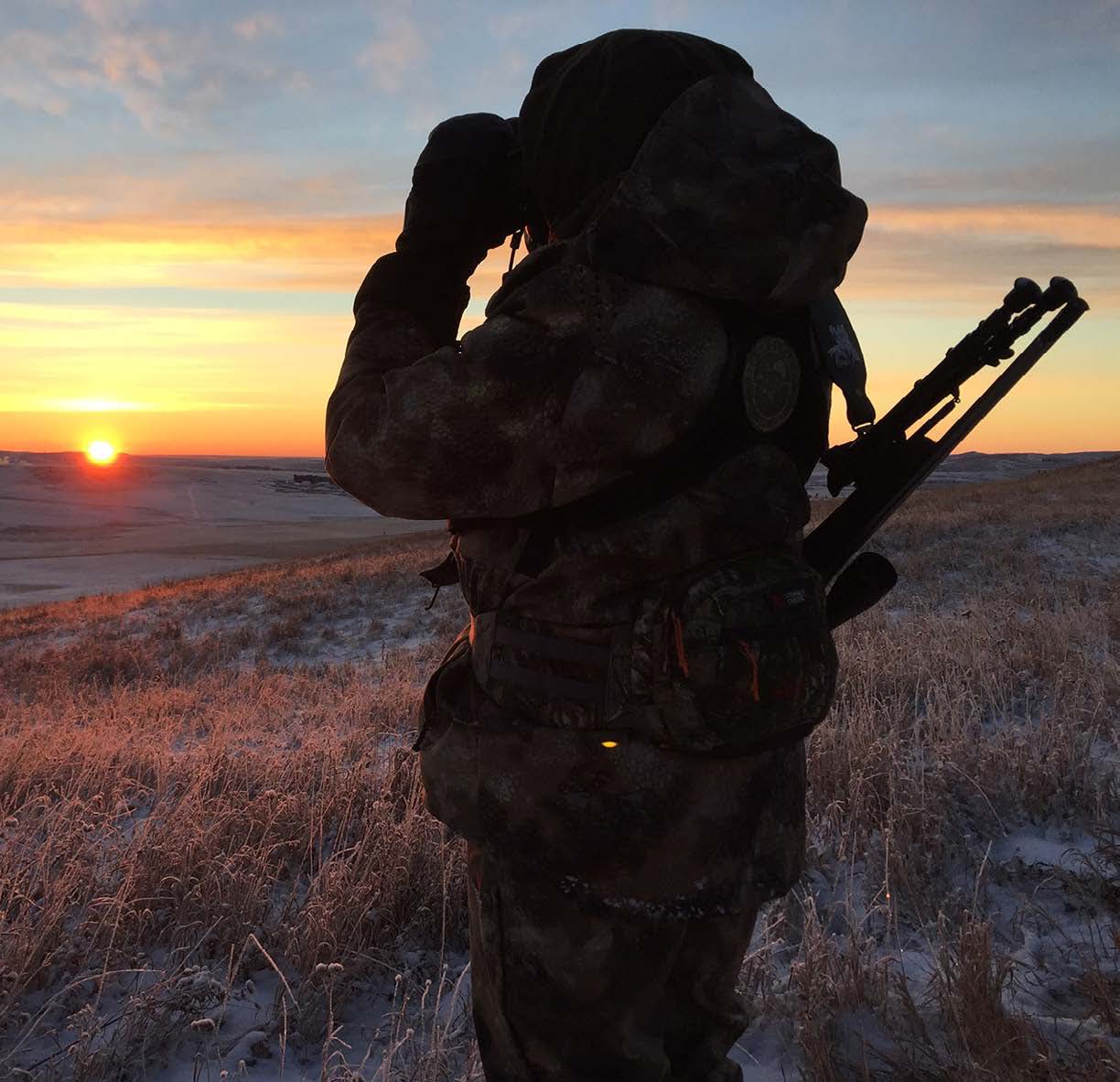
Per our affiliate disclosure, we may earn revenue from the products available on this page. To learn more about how we test gear, click here.



